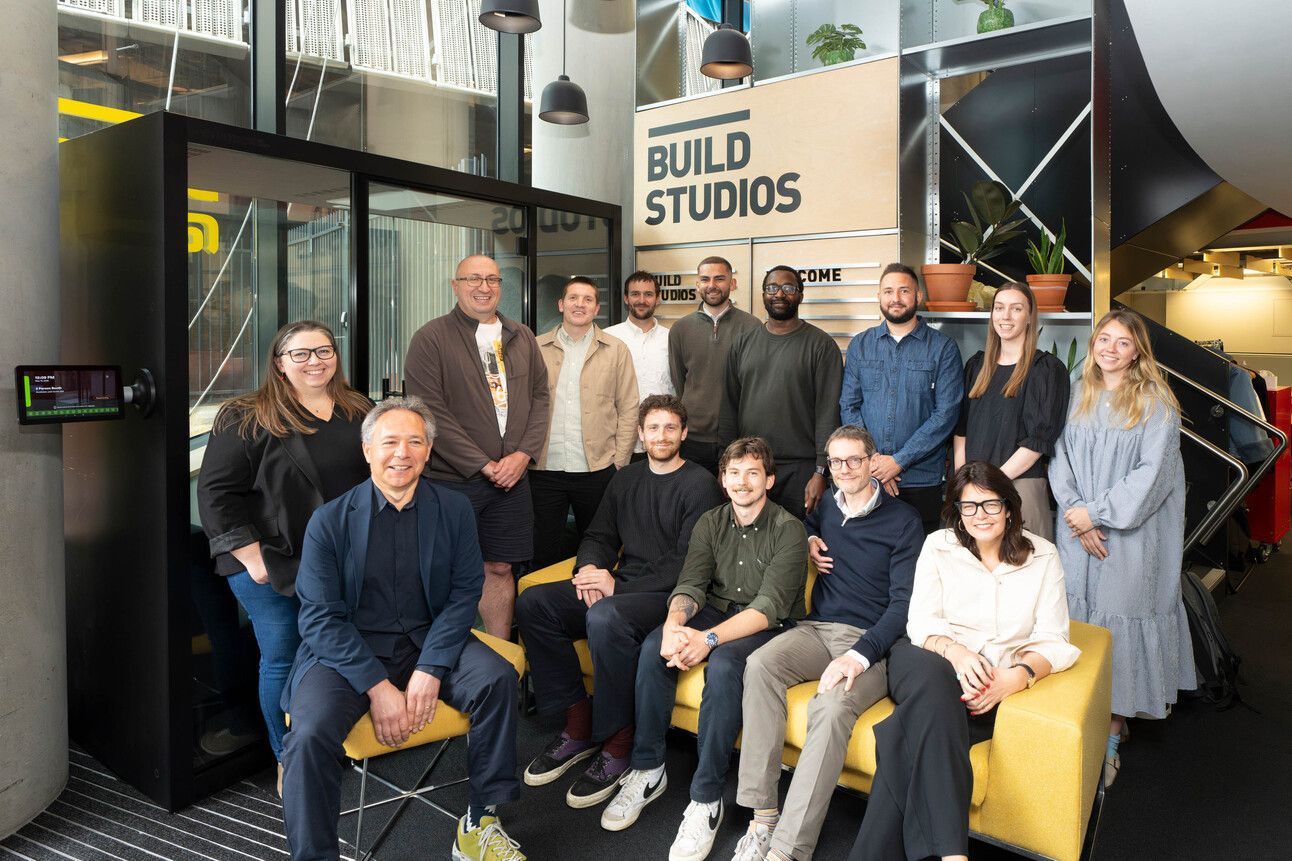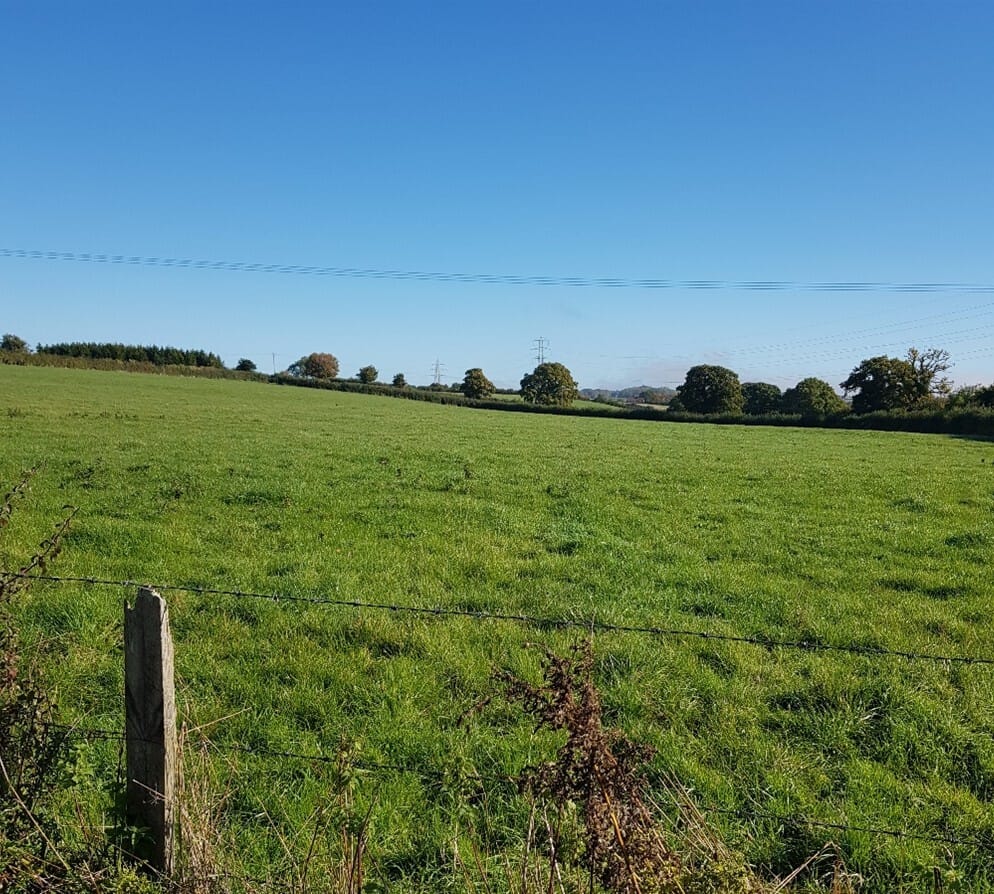- Third Revolution Projects Newsletter
- Posts
- Newsletter
Newsletter
September 2025

Strategic and local planning has been at the forefront of our minds over the summer. A stridently plan-led system in Scotland means that developers and anyone with a land interest who don't engage with the new generation of Local Development Plans risk not safeguarding their interests through site promotion, losing influence and missing out on development opportunities. Our Scotland team can help you engage with the new LDP process. Our residential team looks at the best Scottish cities for securing planning for co-living and our economics team review the Community wealth Building Bill.
Our data driven framework for helping planners understand the transformative effects of new technology and social change received a ringing endorsement from PINS in North Yorkshire, and I chatted to The PlannerPod about the critical importance of strategic planning in navigating rapid change.
You’ll also read about how our Manchester office is embedding itself in the region, more planning approvals and recent promotions for Ben and Petra to Senior Planners.
I hope you enjoy and, we’d love to hear your feedback.
Rob Shaw, Managing Director
Headlines
Third Revolution Projects welcomes Scotland’s bold Community Wealth Building Bill but urges stronger tools, clear targets, and genuine local participation to turn its promise into lasting change.
As rapid technological and economic shifts reshape land use and society, TRP’s DRROP framework helps planners navigate disruption, harness opportunities like AI and renewable energy, and build ambitious, future-ready strategies.
As Scotland rolls out its new generation of Local Development Plans, TRP is helping councils and developers navigate the system, align with sustainability goals, and seize the chance to shape future-ready communities.
With loneliness on the rise, co-living offers a promising housing model, but while Glasgow leads with clear guidance, Edinburgh remains case-by-case, leaving developers to navigate evolving Scottish planning policy with care.
Using its DRROP framework, TRP built a data-driven vision for a new zero-carbon settlement near York, showing how future-ready planning can tackle energy, mobility, and community needs to create resilient places to live and work.
TRP’s solar and battery scheme earned planning approval with a remarkable “over 70% biodiversity net gain,” delivering clean energy, nature-rich habitats, and infrastructure that truly supports communities.
By putting community needs first, TRP secured planning consent in South Norfolk for a solar farm that powers a historic maltings business, bringing nearly 28 GWh of clean energy per year to homes and local livelihoods.
Six months into its Manchester base at Colony, TRP is thriving in a collaborative co-working community that’s fueling fresh ideas, partnerships, and impact across the North West.
We’re proud to announce the well-deserved promotions of Petra Elo and Ben Wheeler to Senior Planner, recognising their hard work, talent, and the vital role they play in TRP’s future.
A policy response to the Community Wealth Building (Scotland) Bill

As Scotland reimagines how its economy can serve local people and places, Third Revolution Projects’ Community Wealth Building policy submission offers a critical, forward-looking assessment of the draft legislation. Drawing on planning and socio-economic expertise, this response addresses how local procurement, asset use, and public sector reform can be harnessed to build inclusive, resilient communities.
The submission highlights key areas where the Bill must be strengthened: enforceable duties, outcome-based targets, and guaranteed funding to avoid symbolic plans or uneven delivery. It also raises concerns over vague consultation requirements that risk tokenistic engagement, arguing instead for participatory planning backed by inequality data and clear governance structures.
TRP supports the Bill’s ambition to anchor wealth within local economies but urges sharper policy tools and local leadership to make this a reality. With the right mechanisms, the Bill could unlock powerful change for communities and small businesses across Scotland.
Click below and explore our response to understand how legislative design can empower place-based growth and deliver lasting, equitable outcomes for Scottish communities.
Future Ready Strategic Planning – Helping Strategic Planners Create Places That Thrive Amid Rapid Change
Third Revolution’s MD Rob Shaw had the pleasure of chatting to PlannerPod, hosted by The Planner’s Simon Wicks and Ben Gosling, and Nicola Gooch of Birketts LLP. Rob talked about the transformational impacts of the energy transition and other technologies on land uses, communities and the economy, and why strategic planning is at the heart of it.

The profession is planning in the context of very rapid change. The 30 year time horizon of Spatial Development Strategies (SDS) will yield the most profound changes in spatial patterns and land use in 100 years, compounded by new forms and widespread infrastructure and a reshaped economy. Put starkly, localities that do not understand this will not be able to deliver the homes they need, risk being left behind economically and will suffer the uncertainties of speculative development.
If this sounds hyperbolic, just think about the effects on land uses and spatial patterns of a renewable and decentralised energy system, electrification of industry, housing, and transport; then compare it with the dramatic impact of their 20th Century equivalents: the mass adoption of the car and cheap abundant fossil energy, which led to car-based suburbs and towns and a hyper mobile economy.
The country is at the midway point of the delivery phase of these technologies and supporting infrastructure, and the inherent land use and spatial impacts are becoming clear. Change is disruptive and can be uncomfortable for many, but it can’t be avoided. Planning for change, and managing the impacts through local and strategic plans is undoubtedly preferable to leaving it to speculative development. But beyond this transitional period, it is the use of the new infrastructure, artificial intelligence, life and material sciences where things get really exciting. Together they will deliver once in a generation (and much needed) transformations in our economy, along with the inevitable reshaping of society that tends to follow. Many trends are already apparent, with people more reliant on technology to avoid needing to learn to drive and to provide services on demand, but the industrial opportunities arising from using low cost decentralised energy, from life sciences reshaping how food is produced and from an economic productivity boom from AI are where the disruptions translate into tangible benefits for everyone.
So an SDS with a 30-year horizon, or even 15 years for a local plan, must start from an understanding of these forces of change. If places are to push through and realise the huge benefits from the disruption of creating new infrastructure, they must start by understanding the risks, opportunities and priorities.
It is unrealistic not to consider how these will affect spatial form, land use, investment and economic priorities from the outset: e.g. housing and industry cannot be planned in isolation from energy infrastructure, locations with access to cheap renewables will do well, AI demands its own impactful infrastructure but will become the bedrock of the economy, along with life and material sciences.
Plans must also consider the effects on communities. They cannot control media narratives of those who wish to focus on the past, but they can demonstrate a compelling vision of how technology and change can improve the lives of everyone.
TRP have created a framework for helping planners navigate change, make sense of emerging trends, create compelling visions and focus investment where it delivers homes, resilience and growth. We have proven it works in North Yorkshire, preparing an evidence base and policies to support a Development Plan Document for a new settlement near Harrogate. The Inspector at public examination found the policies to be sound and noted that they were ambitious, justified and positively prepared.
Our DRROP (Drivers – Revolutions – Risks – Opportunities) framework will give you:
A clear evidence base on societal and technological change
Insight into risks and opportunities for infrastructure investment, spatial and land use decisions, allocations, and economic opportunities
Focused advice on vision, policy, spatial and economic strategy, and delivery
Stakeholder engagement to support delivery.
Download our brochure and get in touch to see how we can help you.
Planning for Tomorrow: The Rise of New-Style Local Development Plans in Scotland

As Scotland embraces the Planning (Scotland) Act 2019 and National Planning Framework 4 (NPF4), a new generation of Local Development Plans (LDPs) is taking shape. Here's what you need to know:
What’s Changing?
Under updated regulations enacted in May 2023, a streamlined planning process now governs LDP preparation, mandating place-based, people-centred, and delivery-focussed plans. Drawing on guidance published in May 2023, planners are encouraged to be innovative, using locally tailored evidence and flexible frameworks to shape effective new-style LDPs.
Timeline: From Preparation to Adoption
Scottish Ministers have set a May 2028 deadline for all planning authorities to have their new-style LDPs in place. That means local authorities should begin the process as early as 2024, working to an estimated 3–4 year development cycle per authority.
The Process: Sequential and Strategic
The new LDP framework outlines a clear, multi-stage process:
Development Plan Scheme (DPS): A public-facing timetable describing preparation phases and consultation plans.
Evidence Report: A critical compilation of local data housing needs, infrastructure, sustainability to underpin the Proposed Plan.
Gate Check: Independent review by the Directorate for Planning and Environmental Appeals (DPEA), ensuring evidence robustness.
Call for Ideas/Sites: optional stage for LPAs to seek input from stakeholders, landowners, developers, communities, public etc to promote ideas and sites.
Proposed Plan, followed by examination and adoption.
Delivery Programme: Post-adoption, authorities must clearly articulate how they intend to deliver the plan’s objectives.
On the Ground: Emerging Examples
Several local authorities are already navigating this new terrain:
West Lothian Council: Published its 2025 Development Plan Scheme (DPS), with its Evidence Report advancing through the Gate Check as of June 2025.
Perth & Kinross Council: Completed the SEA Scoping Report (Evidence Report phase) and submitted it to key agencies in February 2025.
Inverclyde Council: Explicitly references preparation under revised regulations aligned with NPF4 as part of its emerging LDP.
Glasgow City Council: Initiating the City Development Plan 2 (CDP2), integrating NPF4 priorities and regional strategies through its Development Plan Scheme.
TRP Strategic Imperatives in promoting Sustainability
Technical Advisory: Assist authorities in developing robust Local Housing Land Requirement (LHWR) estimates and infrastructure-first evidence strategies.
Eco-Alignment: Ensure Evidence Reports reflect sustainability priorities; net zero targets, biodiversity, climate resilience, embedded in NPF4.
Process Navigation: Support councils through the Gate Check and Examination phases, ensuring smooth transitions from technical reporting to plan adoption.
Strategic Planning: Support councils in Visioning, Strategic Planning (incl. Energy Strategy, Infrastructure planning etc.) through DRROP Framework
Strategic Land/Site Promotion: Support Councils in identifying strategic land, as well as support landowners/developers in site promotion esp. call for ideas/call for sites stage.
Delivery Planning: Help define clear, actionable Delivery Programmes, with milestones and metrics for accountability and transparency.
Community Empowerment: Encourage participatory, inclusive approaches in the DPS phase to embed public values throughout the planning process.
Why It Matters
New-style LDPs are more than planning documents, they are strategic instruments positioned to shape the delivery of sustainable, resilient communities. By helping local authorities adapt to the new system, and landowners/developers in promoting strategic land/sites TRP aims to leverage their expertise to:
Accelerate housing delivery
Advance infrastructure-first and low-carbon agendas
Strengthen community ownership of place-making
TRP Experience
TRP is currently promoting a mix, range and type of sites (greenfield/brownfield, housing/mixed use, 10-1200dws) through the emerging LDPs across Scotland including East Lothian, Midlothian, West Lothian, Fife and Perth & Kinross, with other sites in the pipeline when the appropriate plan stages are triggered.
Opportunities to Engage Now!
Call for Sites/Ideas consultations are currently live in Aberdeenshire City (until 20th October) , Aberdeenshire (Call for Sites until 31st October & Call for Ideas until 31st December), Western Isles (until 30th September), East Dunbartonshire (until 15th September) and Stirling (until 31st October) Councils. If you have land/sites to promote please don’t hesitate to get in touch.
Final Thought
Scotland’s shift to modern, dynamic LDPs presents a unique opportunity: to align land use with sustainability, innovation, and community ambition. For planning and sustainability consultancies such as TRP, this is a moment to help craft the future of Scottish places, actively, impactfully, and responsibly.
TRP has produced a comprehensive RAG spreadsheet detailing where all 34 planning authorities (including the 2 nos. national parks) in Scotland are at each stage of their emerging LDP. Please don’t hesitate to contact TRP if you wish to obtain a copy of this spreadsheet or wish to discuss further how we can assist you in navigating the new, emerging development planning system in Scotland.
Scotland: Co-living & Planning - Where Things Stand (August 2025)
Why it matters. Loneliness is rising across UK cities. Co-living can offer sociable, well-managed rental communities for Gen Z, Millennials and older single renters, but Scottish planning policy is still catching up.

National picture (NPF4)
No specific national co-living policy. Scotland’s National Planning Framework 4 (NPF4) sets the overall rules and priorities but doesn’t define or directly policy-test “co-living” as a distinct use. Relevant hooks are Policy 15: Local living & 20-minute neighbourhoods and Policy 16: Quality homes (incl. Build-to-Rent), which local plans use to assess proposals.
Place-based lens first. The Scottish Government’s 2024 guidance on local living/20-minute neighbourhoods reinforces compact, well-serviced locations, helpful for arguing co-living near town centres and transit.
Local policy: the big two
Glasgow: clear, city-centre-focused guidance
Formal guidance adopted (May 2024). Glasgow issued Large-Scale Co-Living Planning Guidance setting out what “good” looks like and where it belongs, largely within the city-centre living strategy boundary. Proposals are treated as sui generis with requirements on amenity and management.
Key design thresholds. Minimum private space: ~22 m² (studio) / 18 m² (cluster), with a 31 m² threshold used to distinguish co-living (non-self-contained) from self-contained BTR; robust management plans and long-term stewardship are required. (Source text excerpted in public mirror of the document.)
Edinburgh: plan-led but no dedicated co-living policy (yet)
City Plan 2030 adopted (Nov 2024). Edinburgh now assesses schemes under City Plan 2030 alongside NPF4 with emphasis on quality, mixed communities, and sustainable, 20-minute patterns but there’s no standalone co-living policy. Proposals are therefore handled case-by-case under housing quality, amenity and location policies.
Design guidance refresh in train. The council has been consulting on updated Edinburgh Design Guidance in 2025, which supports mixed communities and local-living principles, a useful context for co-living design rationales, though not bespoke policy.
Market signals you should know:
Capital flows are cautious. New-build rental construction (incl. BTR) in Scotland fell in early 2025 as investors weigh rent-control reforms, an important backdrop for co-living viability and funding.
Developer takeaway. Glasgow is currently the most policy-ready Scottish city for co-living; Edinburgh is policy-open but unspecified, so expect a heavier policy justification and engagement burden.
What this means if you’re bringing a scheme:
Best-bet locations: Transit-served, centre-adjacent neighbourhoods that read well against NPF4’s Local Living and City-centre regeneration narratives.
Submission must-haves (especially in Glasgow):
Clear non-self-contained layout logic and space-standard compliance.
A detailed management plan (operations, community programming, deliveries, cleaning, safety, single-operator model).
In Edinburgh:
Anchor your case in City Plan 2030 outcomes (quality, mixed communities, sustainable location) and NPF4 Policies 15/16; differentiate from PBSA and BTR with evidence on community benefits and loneliness mitigation.
Maltkiln New Settlement, North Yorkshire
Data-driven evidence bases for shaping visions and understanding future-focussed infrastructure and development priorities for strategic plans.
We used our DRROP (Drivers – Revolutions – Risks – Opportunities) framework to create an evidence base for a Development Plan Document in support of a proposed new settlement at Cattal, near York. Focussing on zero carbon and active travel, energy supply and use, flexible living and working and climate resilience, the data driven evidence revealed the key risks, opportunities and priorities for the new town, including:
Energy for heat, power and transport will be supplied at the scale of the development, leading to delivery risk if grid capacity is not addressed.
A resilient place necessitates a different approach to masterplanning and infrastructure provision but creates opportunities.
Fewer people learning to drive, automated and on-demand vehicles, risk gridlock and reinforces the need for walking, cycling and public transport infrastructure from the outset.
The anticipated demographic includes high levels of hybrid working and requires rethinking of services and social infrastructure.
We engaged with stakeholders and developed proposals to deliver each priority through investment, developer and partnership actions, policies, and stewardship.
The TRP team defended the evidence base and policies at public examination. The Inspector found them to be sound and noted that they were ambitious, justified and positively prepared.
Success Stories
TRP’s Solar and Battery Scheme Approved with Over 70% Biodiversity Net Gain
 | The TRP team has secured planning consent for a Solar Farm and Co-located Battery Energy Storage System (BESS) in Bath & Northeast Somerset Council. |
Collaborative Planning Drives Consent for Tivetshall Solar Project
 | The TRP team has secured planning consent for a Solar Farm with private wire connection in South Norfolk Council. |
Company News
Manchester Office Update

It’s been six months since Third Revolution Projects opened its Manchester base at Colony, Silk Street, and the city has quickly started to feel like home.
The move has given our team a flexible, collaborative space in the heart of Ancoats, surrounded by a community of innovators and creators. Beyond just a desk, being here has connected us with like-minded people and opened doors to new opportunities and partnerships.
Co-working has been a perfect fit for our growing team, offering the freedom to scale, collaborate, and share ideas in an environment that encourages fresh thinking and connection.
As we look ahead, our Manchester base is set to play an even bigger role in driving projects forward. The strength of the North West market, paired with the adaptability of our workspace, is helping us grow, connect, and create meaningful impact, one project at a time.
If your business is based in Manchester, we would love to catch up over a coffee to see how we could work together to navigate change and shape tomorrow.
Team promotions
We are thrilled to share the news of two well-deserved promotions within the team! Petra Elo and Ben Wheeler have both been promoted to Senior Planner.
 Petra Elo |  Ben Wheeler |
These promotions are a testament to Petra and Ben’s outstanding contributions over the past year, as well as the vital roles they will continue to play in shaping the future success of the company.
Gill Eaton, Operations Lead and Planning Director, commented
"We are delighted to see the progress Petra and Ben have made to the business since they joined. This is in recognition of their hard work and commitment and we wish them all the best in their future career progression."